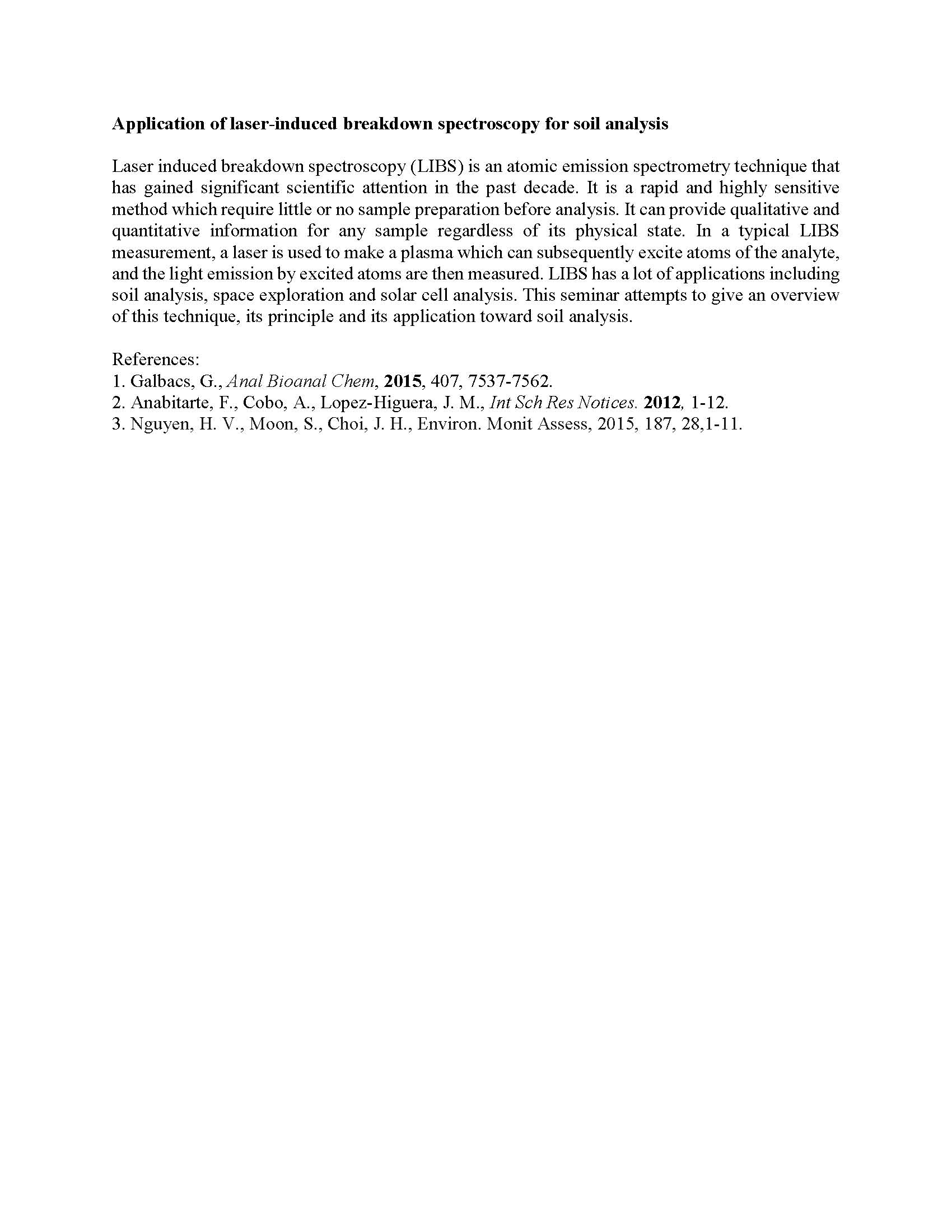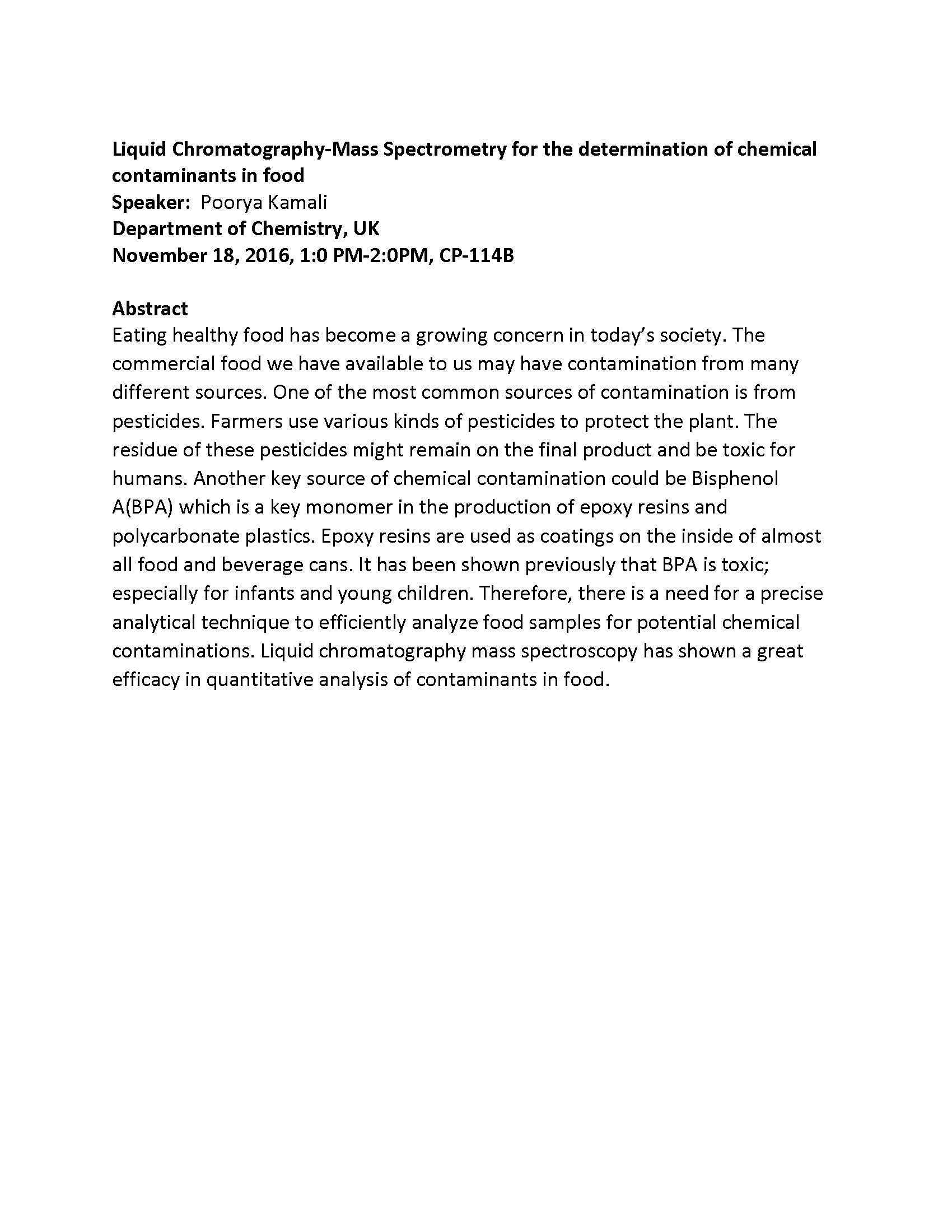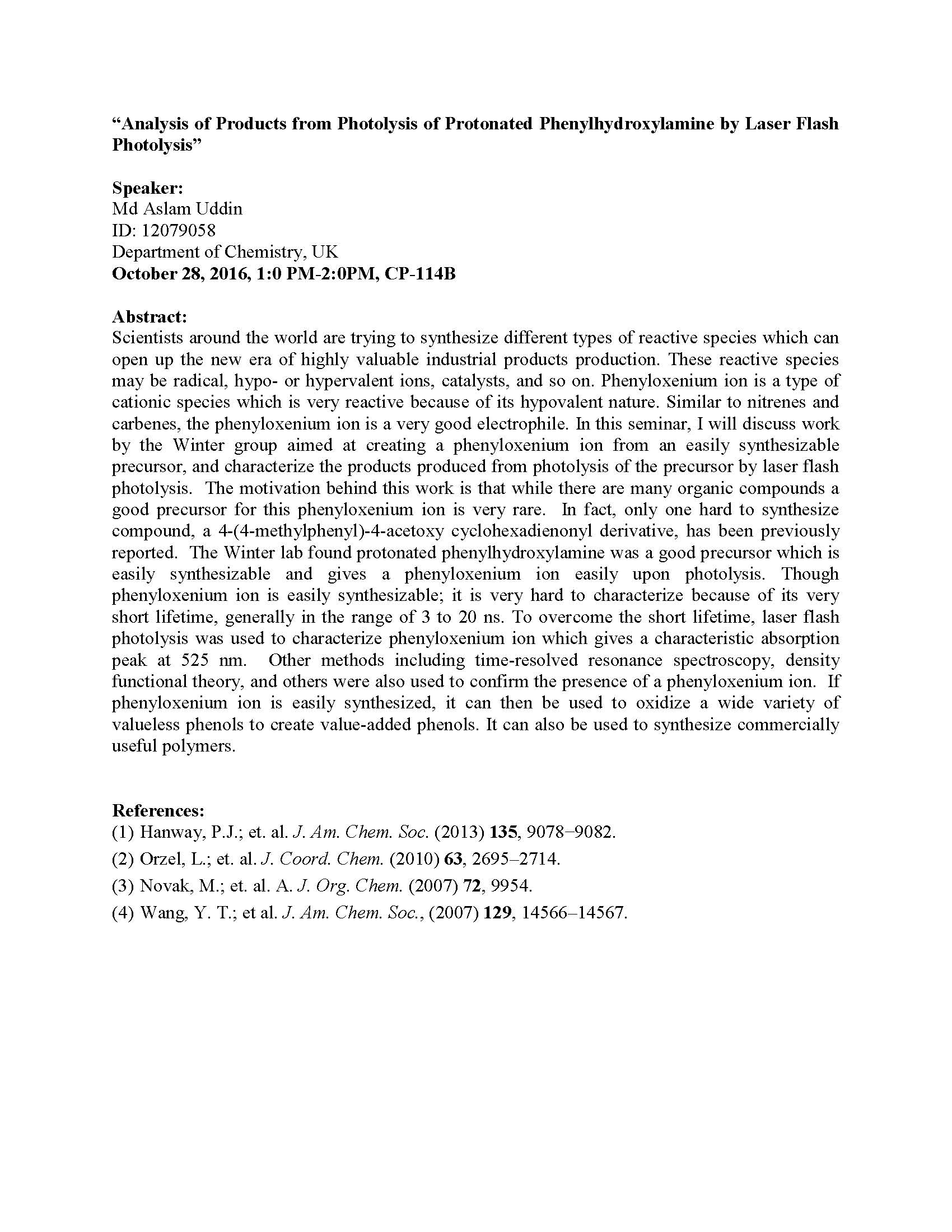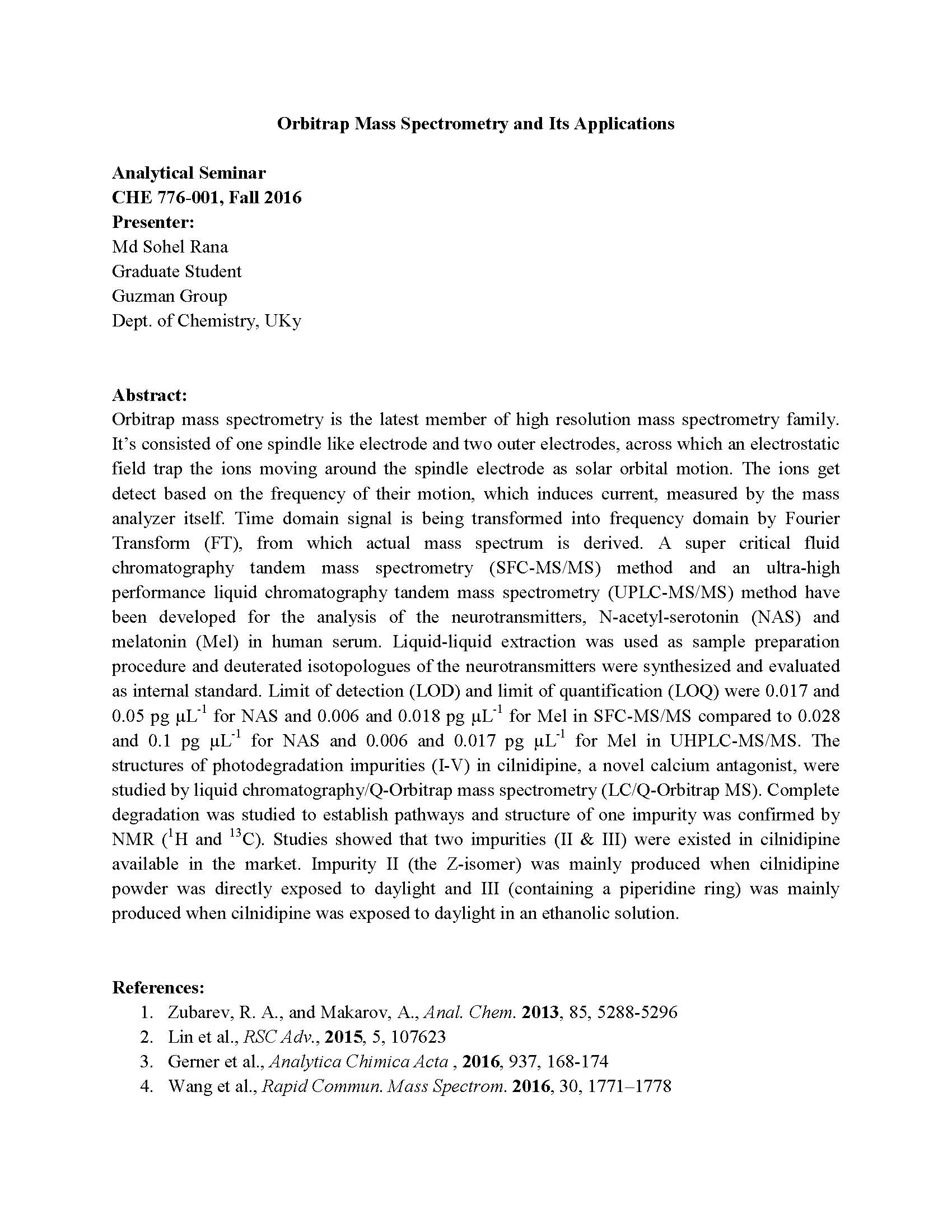Application of laser-induced breakdown spectroscopy for soil analysis



Zero Mode Waveguides (ZMWs), a Powerful Tool for Single Molecule Spectroscopy
Abstract
Single molecule fluorescence techniques are a powerful tool for the investigation of heterogeneity in biological systems. Despite many advantages, it is still a challenge to ensure a single molecule in the observation volume at physiological concentration levels with sufficient signal to noise for detection. For solution based studies, the concentration typically has to go down to nM to pM level for single molecule resolution which is much lower than physiological concentrations for numerous enzymes or proteins. On the other hand, the fluorescent probe has to be bright enough to distinguish the fluorescence signal from background noise or cellular auto fluorescence. Zero mode waveguides (ZMWs), arrays of nanosized holes on metal sheets, have been used to address both concentration and fluorescence brightness issues. Extremely low observation volumes (10−21 L) inside ZMWs holes offer single molecule resolution at µM to mM concentration; while surface plasmon effects within the ZMWs can also enhance the signal intensity from the fluorescent emitters resulting in improved signal to noise. In this talk, I will discuss the basics of single molecule spectroscopy, some of its application mostly to the biological field and its challenges, and discuss the use of ZMWs as a complementary tool for improved single molecule spectroscopy.
References:

Fluorescence Microscopy: Applications of Fluorescence Recovery after Photobleaching to protein transport in living cells.
By:
Shardrack Asare
Abstract
Fluorescence recovery after photobleaching (FRAP) is a non-invasive analytical technique that utilizes a confocal microscope and green fluorescent protein to study the rate of diffusion and dynamics through tissue or cells. In most FRAP experiments, proteins tagged with green fluorescent protein (GFP) is illuminated with a laser source, causing a bleach of the GFP but not the protein’s function, the rate of protein diffusion can then be determined by photobleaching a specific area of the cytoplasm and measuring the rate of fluorescence recovery. In this talk, we will discuss the use of FRAP to measure the mobility of GFP-tagged Sup35p in its non-prion form in [psi-] and its prion form in [PSI+] cells. In conclusion, FRAP has successfully been used to measure aggregation state of [PSI+], and this has giving a better understanding of the mechanism of prion curing by guanidine hydrochloride (Gdn).
References
Wu et al, Methods 2006. 39 (1) 43-49
Moran-Miraba, M. J. Cellulose 2013. 20 (5) 2291-2303
Luu et al, The Plant J. 2012. 69, 894–905


